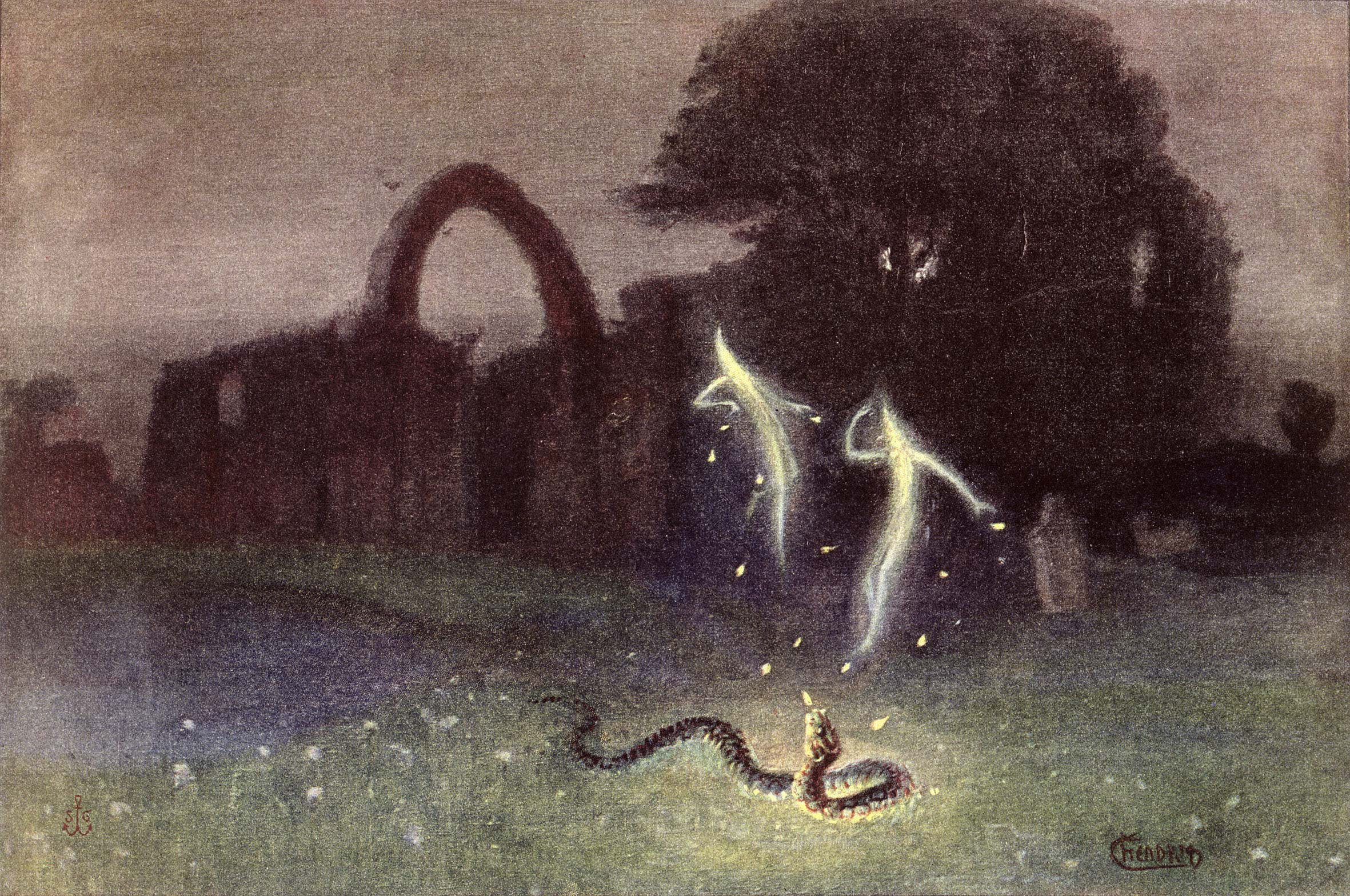Will-o'-the-wisp
 In folklore, a '''will-o'-the-wisp, will-o'-wisp, or ; }}), is an atmospheric ghost light seen by travellers at night, especially over bogs, swamps or marshes.
In folklore, a '''will-o'-the-wisp, will-o'-wisp, or ; }}), is an atmospheric ghost light seen by travellers at night, especially over bogs, swamps or marshes.The phenomenon is known in the United Kingdom by a variety of names, including '''jack-o'-lantern''',: Jack-with-a-lantern, Jack-a-Lantern and n3, Jack-o'-Lantern, citing Allies (1846)}} '''friar's lantern,}} and hinkypunk''', and is said to mislead and/or guide travellers by resembling a flickering lamp or lantern. Equivalents of the will-o'-the-wisps appear in European folklore by various names, e.g., in Latin, in French, or in Germany, Hessdalen light in Norway. Equivalents occur in traditions of cultures worldwide (cf. ); e.g., the Naga fireballs on the Mekong in Thailand. In North America the phenomenon is known as the Paulding Light in Upper Peninsula of Michigan, the Spooklight in Southwestern Missouri and Northeastern Oklahoma, and St. Louis Light in Saskatchewan. In Arab folklore it is known as .
In folklore, will-o'-the-wisps are typically attributed as ghosts, fairies or elemental spirits meant to reveal a path or direction. These wisps are portrayed as dancing or flowing in a static form, until noticed or followed, in which case they visually fade or disappear. Modern science explains the light aspect as natural phenomena such as bioluminescence or chemiluminescence, caused by the oxidation of phosphine (), diphosphane () and methane (), produced by organic decay. Provided by Wikipedia